Fine Art Today would like to congratulate William Suys for being elected Master Signature Member in the Oil Painters of America, a non-profit organization dedicated to the preservation of representational art.
The recognition, he says, “is a heartwarming and humbling confirmation of where I stand as an artist. It is also a huge opportunity and challenge, as it lays a foundation for a new level in my exploration of Art and what I am able to develop and offer. I really look forward to doubling down on my existential effort toward realizing Artistic mastery.”
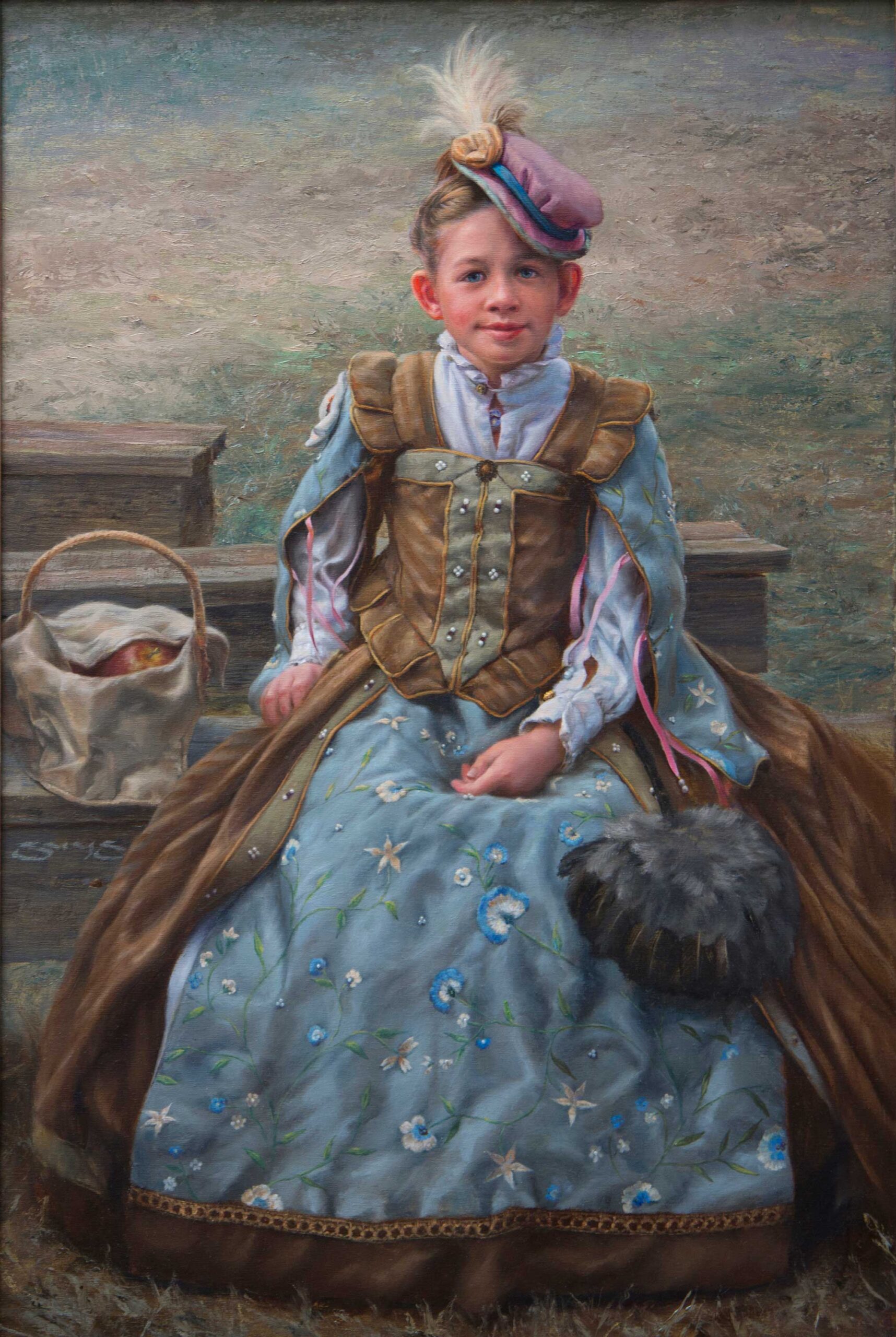
“I love when I come across a person and personality that just grabs me,” William said. “This girl’s mother was putting the final touches on a beautiful dress I believe she made for the Renaissance Faire. I loved painting the design, the beauty of the material, and the embroidery, along with the engaging quirkiness of this young lady.”
William’s announcement is wonderful, and our team is happy for him and his many achievements. As he and I continued to converse via email, however, I realized that this “story” is much bigger. His is a story that is representative of why so many of us are drawn to art and from so many different angles. He helps us understand with a fresh perspective why it’s so important. Why it’s so much more than what we end up viewing in a frame.
For example, he shares how his artistic path might have veered toward music, specifically playing the trumpet. “Both of my parents were deaf, and so much of their world came to them through visual stimulus,” William said. “Still, I always found music incredibly interesting and stimulating.
“When I was in high school, I was learning to play the trumpet; I was in my basement bedroom practicing and my sister was at the door listening. My dad also came to the door, and after a while, he asked her, ‘Is he good, does he sound good?’ (all in sign language, of course).
“At that moment, I decided working on any musical talent wasn’t really fair to them, and I should really focus on areas that they could appreciate, too.”
Without further ado, enjoy the following exclusive and incredibly moving interview with William on his path in representational art, and in life.
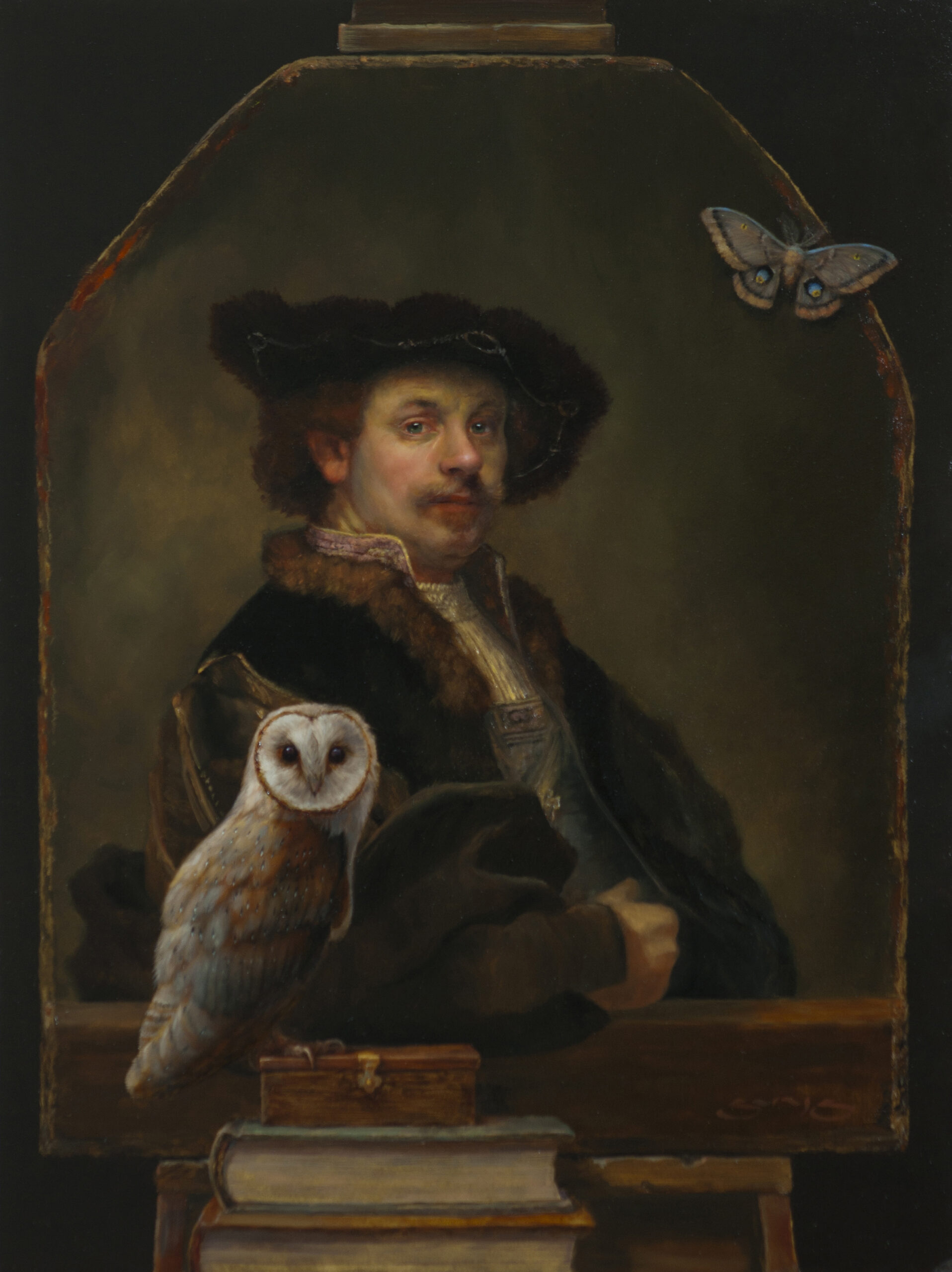
“This early painting is a favorite, and it won Best of Show in the Salon International. It started with a dying moth we found when visiting my wife Kristin’s dad in Sarasota. I found the appearance and texture of this moth so interesting, so I carefully brought it home to paint. As I spent time with it, its camouflage and faux ‘eyes’ called me to explore a range of visual symbols, whether natural or man-made.”
Cherie Dawn Haas: Tell us a little about your path in art, and how your work has evolved since the beginning.
William Suys: To be honest, answering this question would require a long, wildly diverse discussion of ‘Life’ and ‘Art.’ As my work evolves, I believe the two are completely intertwined. In this format, I’ll share a few quick notes about both:
I have been drawing in some shape or form since my earliest memories. For some reason, I’ve always been compelled to create things, whether in two dimensions or three. There has always been an urge to produce something that wasn’t there before. It did not start out as a pursuit, it was simply what I did — it is still what I do. I do recall a pivotal moment in my young drawing life: We had a class trip to see an exhibit of drawings by Andrew Wyeth at the Art Institute of Chicago. I was blown away by what I saw. The thought that kept running through my head was, “So …THAT’S what I’m trying to do!”
I enrolled in a commercial art program and moved on to Fine Art in college. Abstract expressionism was in vogue and I realized some artists were more successful simply due to their ability to ‘wax eloquent’ about the schlock they created. I intuitively felt I should hone my craft and my vision would evolve. I also realized the key to being a successful artist isn’t whether you’re trained or self-taught; it is being a self-driven artist … seeking and developing the visual and emotional building blocks that feed one’s growth.
While in school I experienced a great range of “creation,” from the potter’s wheel and sculpting (which may have been my forte) to creating the exploded-view Assembly Manual for Excalibur Motor Cars and having a one-man show. I received tremendously positive feedback and support from my instructors, including requests that I apprentice with a professor who had works in the Smithsonian.
But, because the Fine Art world was a strange and dicey proposition during this time, I morphed from an Art Major to graduating as a Business Major so I could feel secure in my ability to raise a family. As it turned out, I loved that life and the company I worked for, and I learned so much that also strengthened my work and my artistic career. I still drew and painted in watercolor every day.
When I left the company, I switched from watercolor to oils and found rapid success. I was working toward building a major series of paintings while traveling the world to curate an international art collection, but my wife became severely alcoholic and I was prompted to focus solely on the kids and life at home. This caused me to shift toward work that was more basic and could be marketable in local galleries; a safer solution, but also something I feel stymied my larger creative potential. Still, my kids were more important than my art ‘mistress’ and I just did my best.
Curating and purchasing an international collection of art reinforced for me how important it was to deliver a story, message, or emotion in the art I responded to. I also saw the importance of maturity in one’s work; there are often new artists who are very capable craftspeople, but years of work and understanding seem to infuse an artist’s work with depth and gravitas that will stand the test of time.
Fortunately, after a few difficult years, I met and married Kristin. She was a former Designer/Art Director and lifelong “art person” — maybe even more than I was! She understood what I was about and was completely supportive of me and my work. Her desire to see my work develop and my career grow has been a wonderful catalyst. Though she’s an uncompromising critic, I can never thank her enough.
Even with this healthy new life, the past few years have been consumed by the illness and death of my son. He died a Major in the Air Force of cancer from burn pit exposure. This has been so heartbreaking that for the first time in my life, I have not created art on a daily basis. I do, however, feel deeply that the aftermath of this experience is driving me to truly dive into my core principles and I will begin to create work that reflects my soul. Though it’s been difficult, I believe it may result in the true “evolution” of my mature work.
In short, the evolution begins with understanding and developing one’s craft; transitioning from learning how to see to building upon that foundation to eventually express life and feeling in a visual manner. I am really looking forward to what will come in the years ahead.
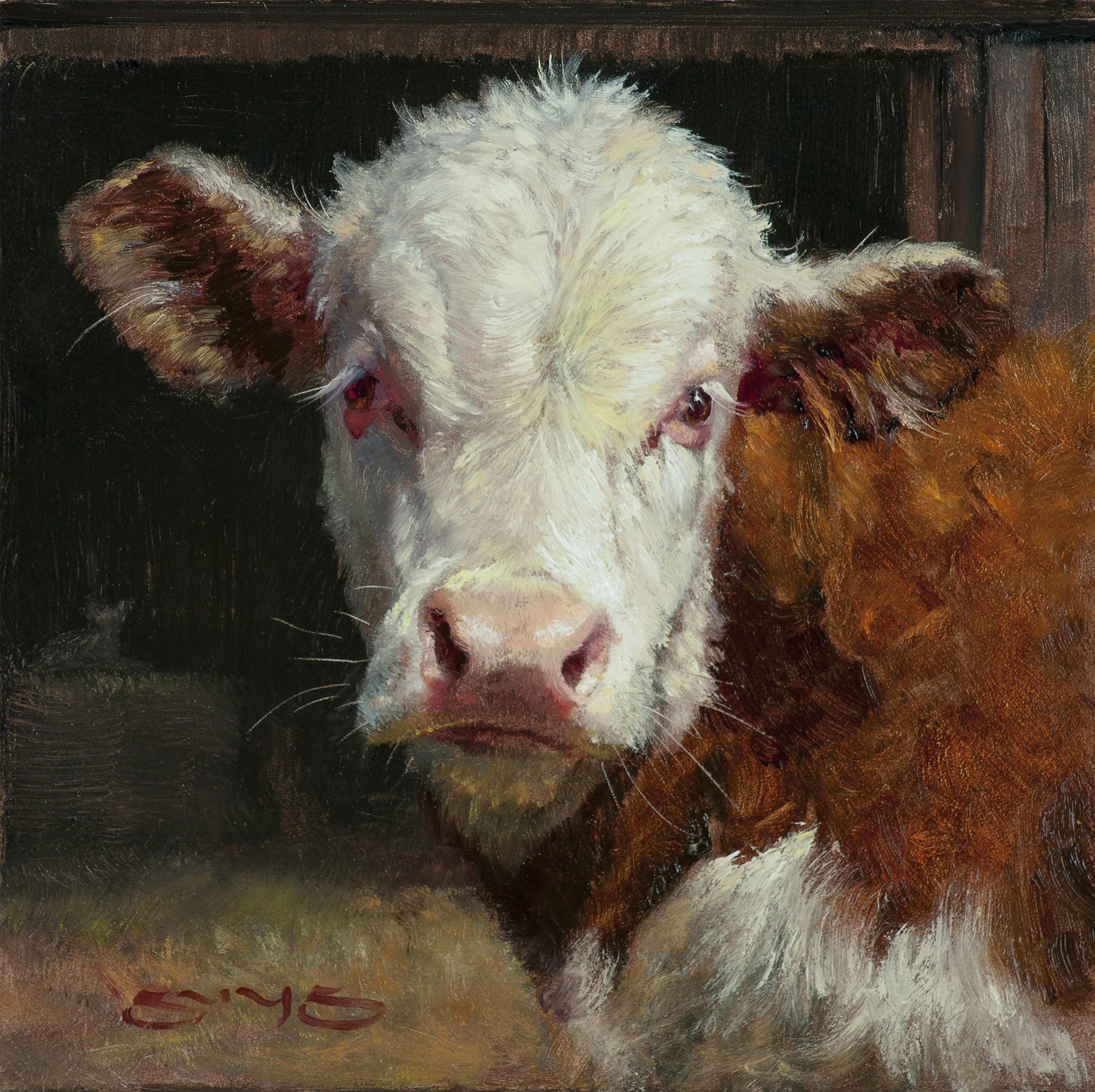
“Some paintings just dance themselves onto a surface. This one appeared in a wonderful hour or two and has had a magical presence ever since.”
You’re known for your incredible figurative works, among other subjects in representational art. What are some of the things you consider when painting one’s portrait?
Thank you for that.
When I’m painting someone’s portrait, a simple likeness is only a beginning. I want to bring that specific person and personality to life. I work to fully understand the structure, gesture, and form, and I like to imagine my brush laying both transparent and opaque paint over and around the actual surface of my subject.
I also find it is very helpful to “fall in love” with one’s subject … to fall in love with the beauty of that particular human form and its presence. Once you really become intimate with your subject, celebrating that individual seems to flow naturally and the end result will breathe forever.
What is one of your favorite paintings (by you), and can you tell us about it?
A current favorite is “The Immigrant.” I feel I’m expressing a life … the young subject is engaged within themself, and we are not sure exactly what they are doing or where they are going, but I sense wonderful potential within the world of this piece. I’m happy it expresses a story in beautiful, interesting paint.

“As I mentioned in the text, I love this painting; both the process of its creation and its lasting presence. It’s an intimate moment that speaks to a lifetime of discovery and promise.”
How does plein air painting fit into your process?
I always say I do plein air because it informs my work, and I mean it! When plein air painting, we’re being presented all the questions, and they take all forms; the solidity of a building, the transparency of atmosphere, the transition of light, and the translucency of a tree. With each painting, we learn a little bit about how to understand the complexity and beauty of interpreting what is presented to us in the natural world.
As I go forward with my plein air work, I’ll want to build a two-dimensional personal celebration of the environment presented to me — while working toward a genuine emotional response. Because of the immediacy and idiosyncratic nature of each plein air experience, success is not guaranteed, but sometimes serendipity pulls everything together with very satisfying results.

“Coming off the ferry on Washington Island, WI, this old charmer is one of the first landmarks that says ‘home’. I painted this plein air one evening on a visit to our cabin last summer and it hangs in our personal gallery.”
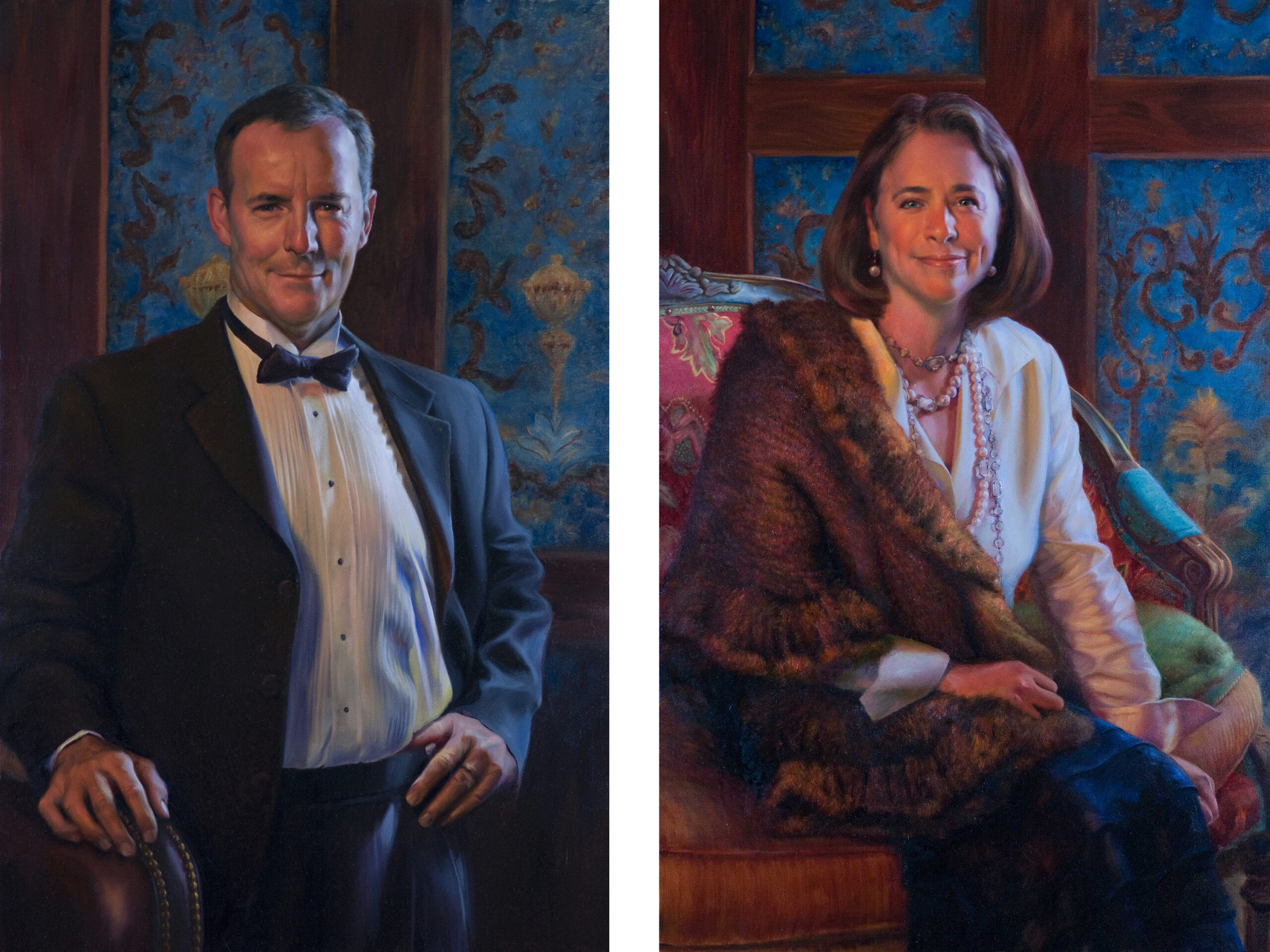
“A matching pair of portraits: I thought it was a beautiful solution to have them hang in the same special area, where both subjects command an equal presence and importance.”

“This was an official state portrait that spoke to the love this governor had for his time in the State Senate while also celebrating the large, amazing space within our beautiful Wisconsin State Capitol.”

“Traveling often brings inspiration for a painting. Visiting New York and staying near the Flatiron Building prompted me to create what felt like a plein air piece … celebrating the light, space, and magnificence of this building and the City. Happy to have this painting hanging in the Italian headquarters of the company that owns the building.”
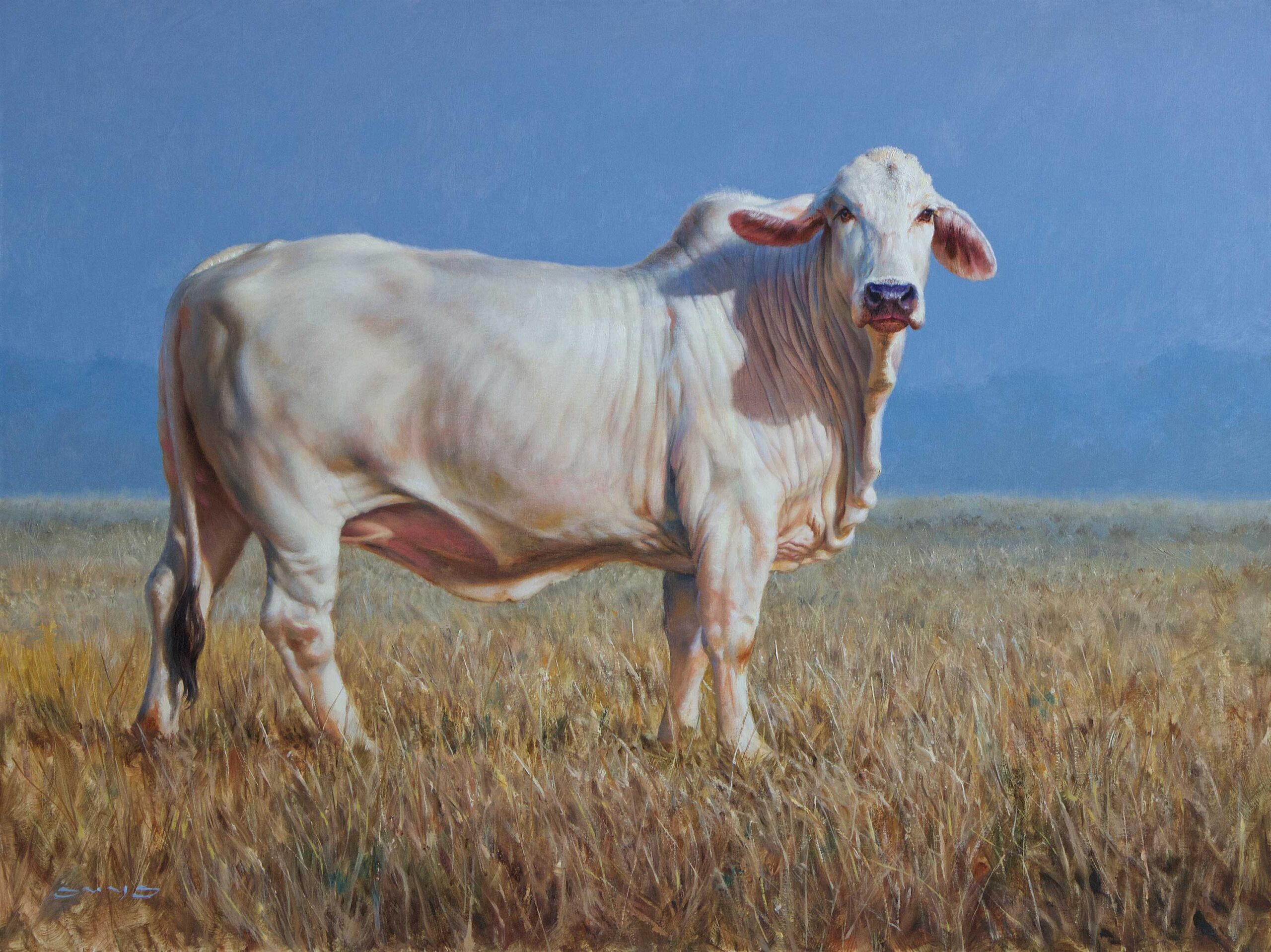
“I loved the singular majesty of this Brahman cow on a misty, peaceful West Texas Morning. I was very moved by the particular atmosphere of her setting and I created a few paintings from this day.”
See More Representational Art
- Connect with William Suys and see more of his representational art: williamasuys.com
- Learn more about the OPA and its involvement with representational art: oilpaintersofamerica.com
- Browse more articles on representational art and artists: fineartconnoisseur.com






